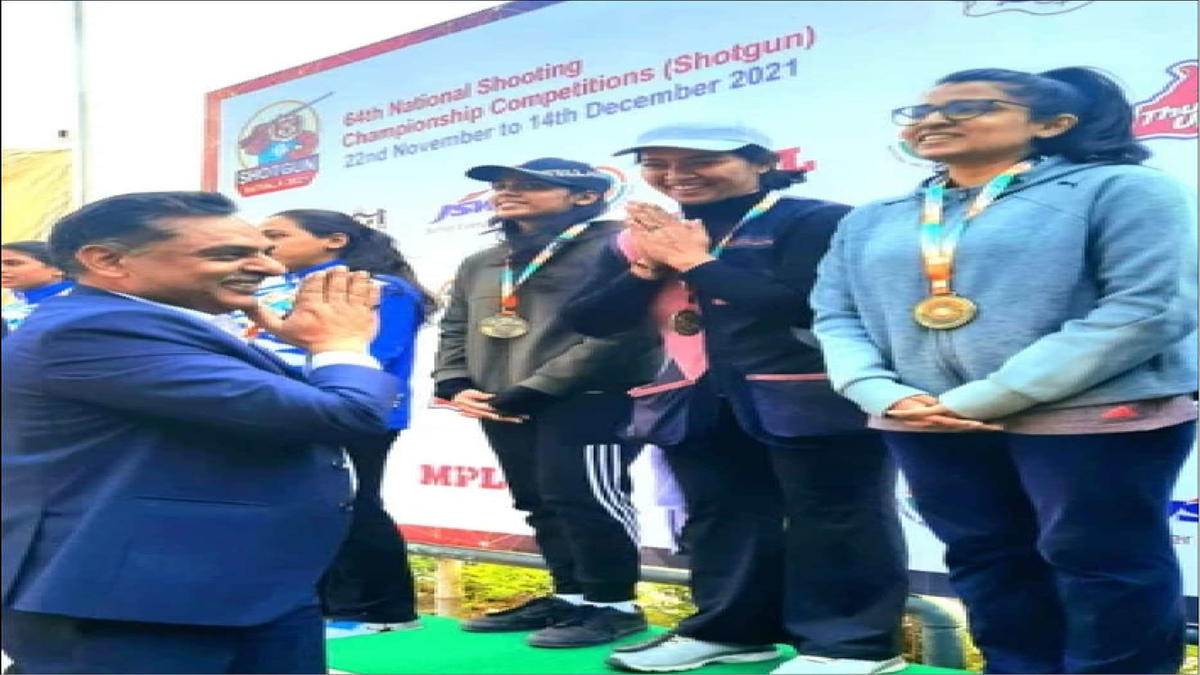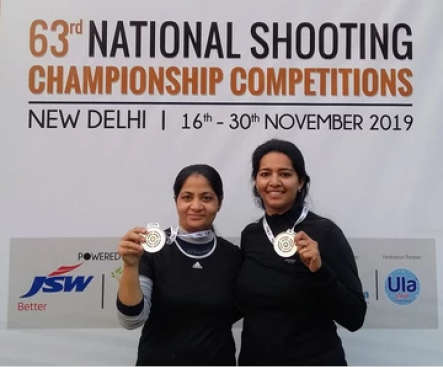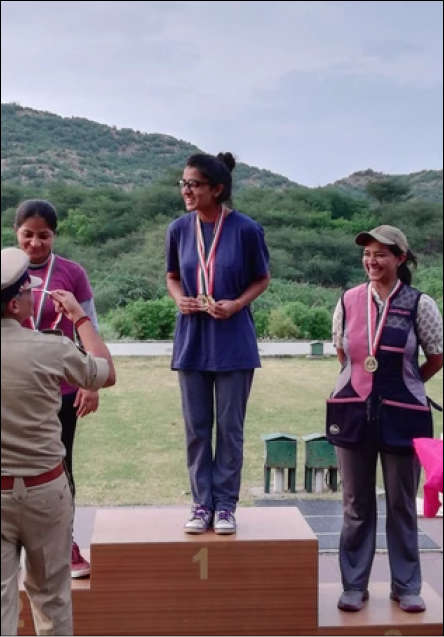


Rajputana’s archaic association with warrior-ship has translated during less feudal eras into renowned sportsmanship in the fields of equestrian sports and marksmanship amongst others. Late H.H. Maharaja Karni Singhji of Bikaner made India’s mark in the world of shooting, a legacy that his daughter, H.H. Baijilal Rajshree Kumari inherited and proved to be a trailblazer indeed. In more recent times, Rajyavardhan Singh Rathore’s Olympic and Apurvi Chandela’s Commonwealth medals brought immense pride to the nation. While male expedience in sports generalised as masculine is expectingly lauded, increasing participation of women in these disciplines is reclaiming the sphere altogether. Moreover, the oft-forgotten martial expedience of Rajput women is revived every time a woman shooter narrows down on her target and fires her weapon.

With Bihar’s Shreyasi Singh clinching two golds at the recent national championship in Patiala, Rajasthan’s women double trap shooting team ruled the winning podium, winning their state gold with their cumulative scores. Thus, it can be said without doubt that this year’s double trap shooting season truly belonged to Rajputana’s various daughters. With Shreyasi’s forthcoming feature on the horizon, Rajputana Collective proudly celebrates the victories of champions Himangini Rathore Hooja and Anushka Singh Bhati. Members of Rajasthan’s trapshooting team that emerged victorious this year, both Himangini and Anushka share their journeys as trap shooters – how it all started, their highs and lows, and insights into India’s shooting world.
Bearing her ancestral roots in erstwhile Bikaner’s Ghantel thikana, Himangini Rathore Hooja reminisces growing up to the glorious tales of late H.H. Karni Singhji. She was blessed with the streak of her maternal grandmother (Nanisa), who made her mark by winning small bore competitions in Uttar Pradesh’s Tala estate as early as the ’60s. Despite that, it wasn’t until after Himangini’s marriage that she took to shooting clay pigeons. “My husband enjoyed clay shooting and encouraged me to visit the shotgun range with him at Jaipur. I fired my first shot in 2011, but I only took up shooting in 2015”, she says.

Subsequently, her younger teammate, Anushka Singh Bhati elaborates on her beginnings. “My papa got me into shooting, as he was a national-level shooter in the 1980s and wanted to introduce his children to the sport as well. When we were young, he’d take us to the range. Initially, I started with pistol but then got into trap as it was an outdoor sport and I liked that. Initially, I was quite hesitant but my parents and brother Janmejay motivated me. I smashed my first clay bird in trap, it was my first ever target with a little bit of beginner’s luck.”
Himangini’s recently acquired all-India ranking of 4th in double trap accords a convincing validity to her statement, and she is truly walking the talk. In similar conjunction, Anushka’s impressive qualification into India’s top 15 in women’s trap and double trap events supplicates this community-centric conviction. Moreover, she is the only woman shooter from Rajasthan to have qualified An athlete endorsed by Khelo India, Anushka won Rajasthan its first-ever gold medal in the senior trap mixed team event with Manavaditya Singh Rathore.
While sharing their rise in shooting glory, both Himangini and Anushka pay their worse days at the range their due. “I definitely have a lot of low days where I feel unhappy with myself when I am not able to invest mentally in the game to the extent that I feel I should be”, Himangini adds. Anushka too shares a day in the recent nationals when she was left distraught by her unexpected performance. These shooting blues are a feeling that every practicing shooter or even sportsman can relate to. But success comes to the stubborn hearted, and evidently so. Within two years of shooting, in the 2017 nationals, Himangini had made her way into the trap finals match. On a similar feat, Anushka too scored her lucky 25/25 in her second nationals’ participation.
The need to bolster India’s infrastructure for shotgun shooting though is one that both concur with. “I don’t think that the current infrastructure is sufficient for the growing talent in shotgun shooting. To begin with, there is a shortage of ranges all over India. Other than that, the licensing procedure for weapons is a very complicated procedure and offers little support”, Anushka comments. Adding to that, Himangini says, “Trap shooting is an expensive sport. Availability of firearms and ammunition is a tremendous problem when one is just starting off with clay shooting. Also, while both- the union and state governments provide financial support, the actual disbursement of funds could be made more prompt. In my case, the Rajasthan Rifle Association has been extremely supportive through the years, and I feel the support of local, district and state associations will help the growth of national talent.”
The adverse impacts of Covid-19 on the sport of trap shooting is another aspect that is difficult for shooters worldwide to sideline. “We didn’t get to practice much in the past two years due to Covid and not many matches were held. This led to a lack of mental preparation that affected my performance in the last nationals”, Anushka elaborates. Himangini holds a relatively more optimistic approach. Although factors relating to the pandemic and personal safety do divert one’s mind with additional elements apart from shooting while in a competition, she credits the open-aired nature of the sport as a crucial safeguard. “At the ranges in Jaipur, all shooters were extremely considerate and careful regarding Covid norms”, she adds.
When asked about their favourite marksmen, Anushka idolises Michael Diamond and had the good fortune of meeting him during his visit to the Rajasthan OASES Range. Himangini mentions Slovak Shooter Zuzana Štefečeková as her shooting inspiration and praises her for her performance at the Tokyo Olympics. In the 2019 nationals, the duo was a part of the teams that had won Rajasthan silvers in trap and double trap. That marked a special year for being their first silver victory, and 2021 made them bring home the gold.